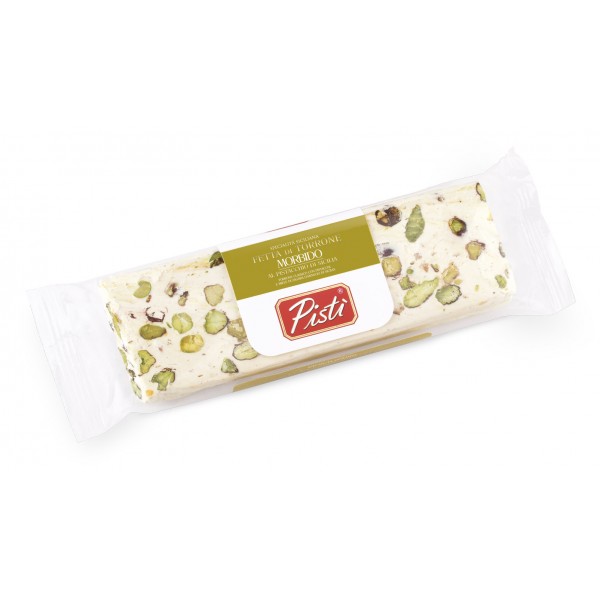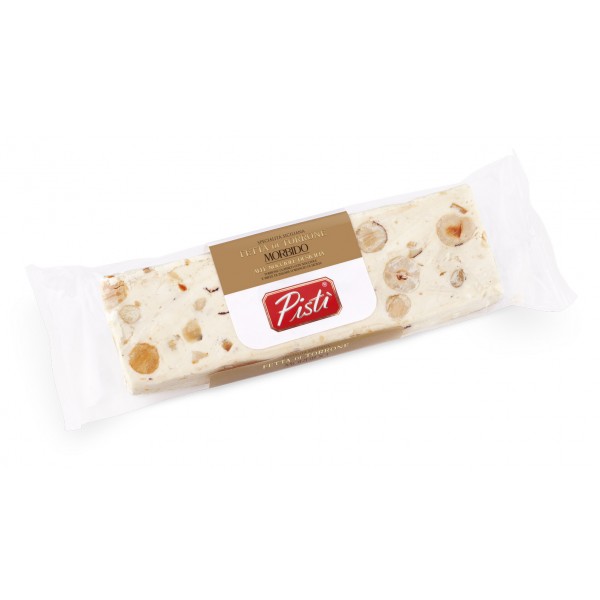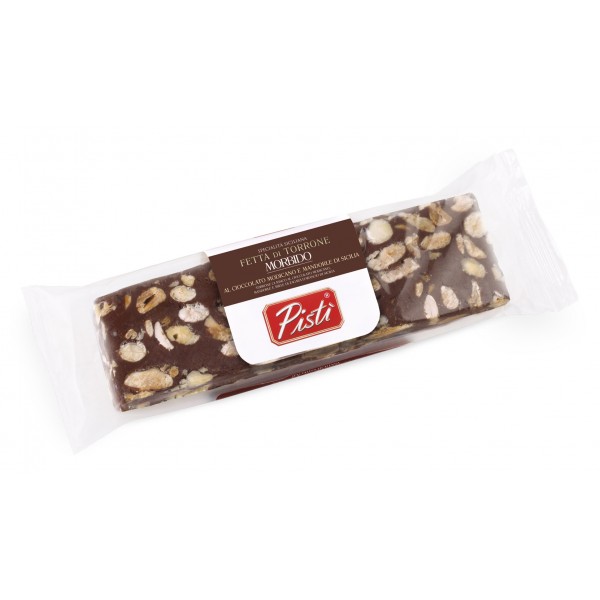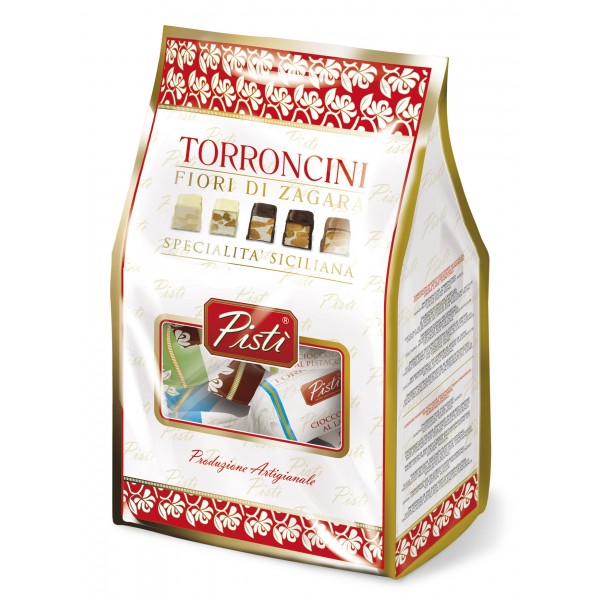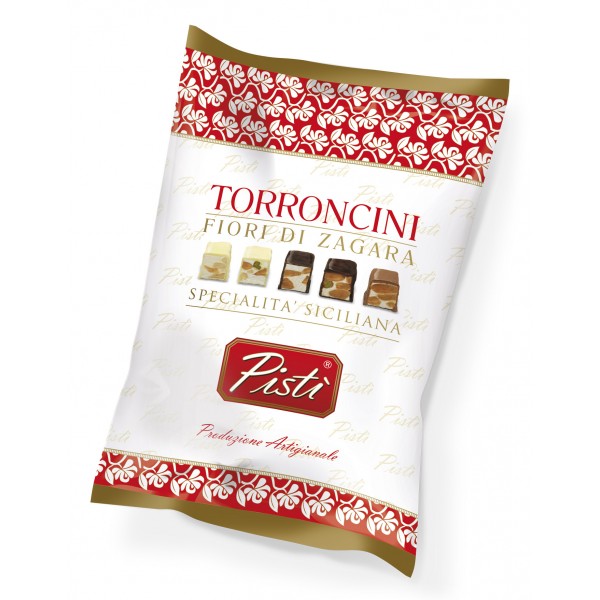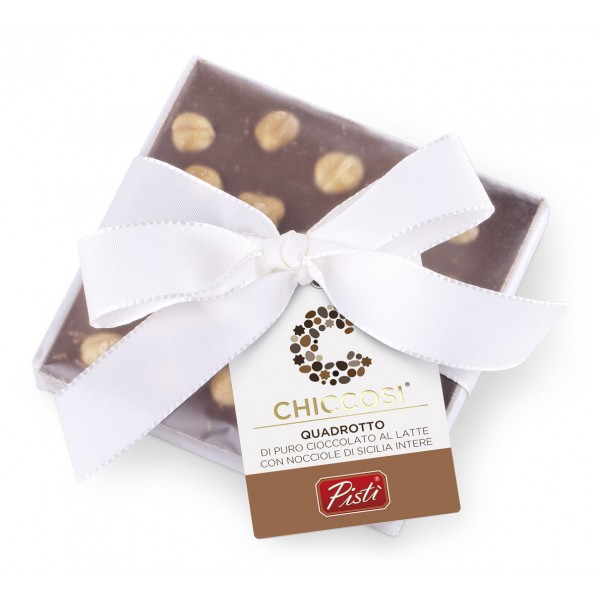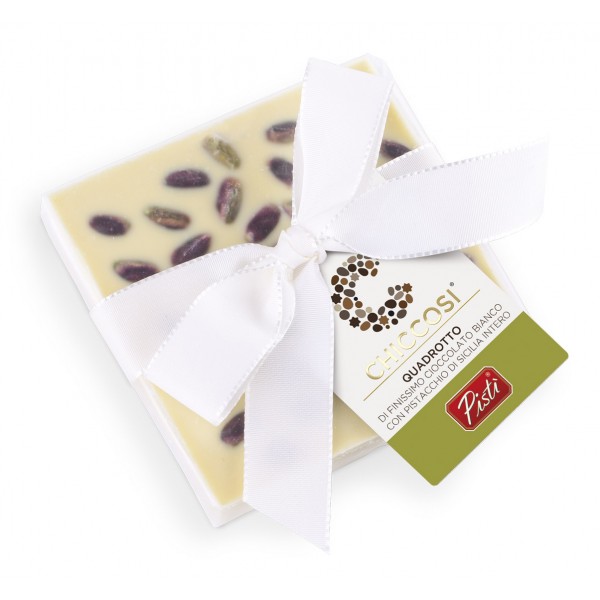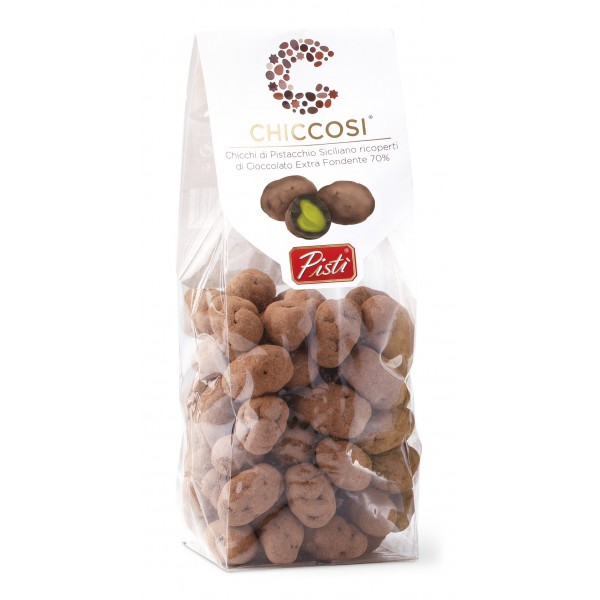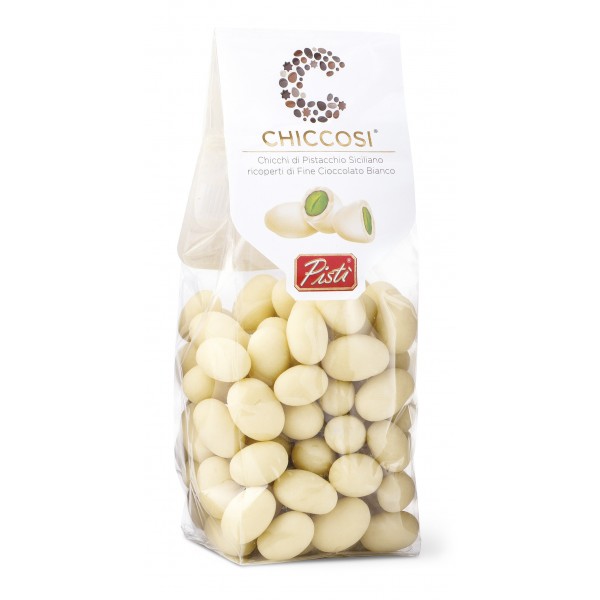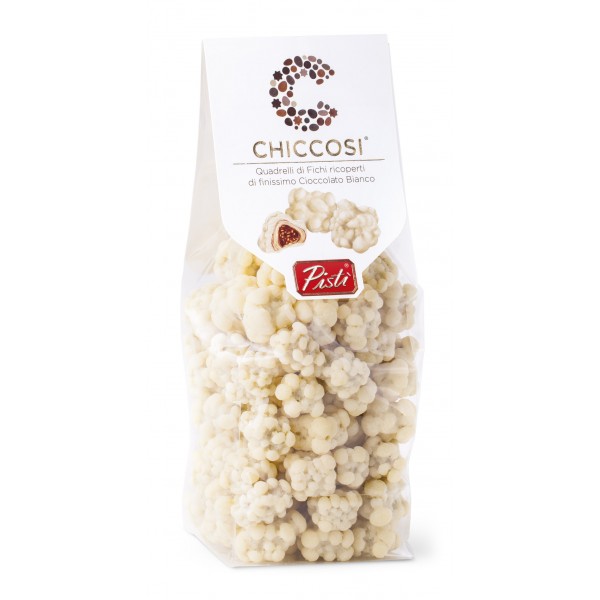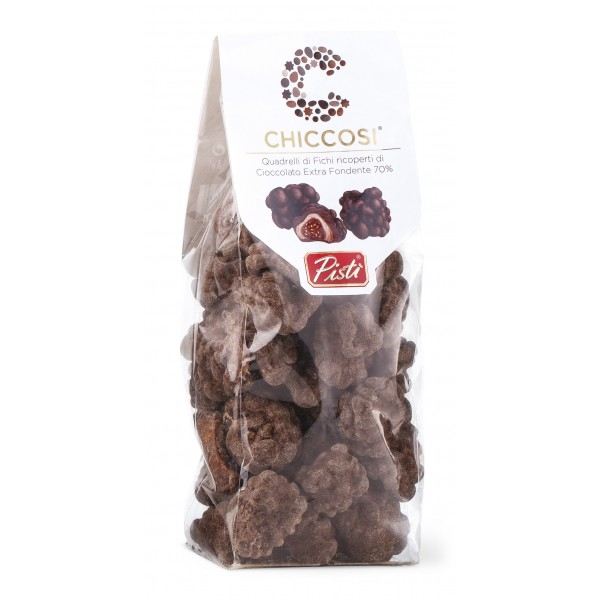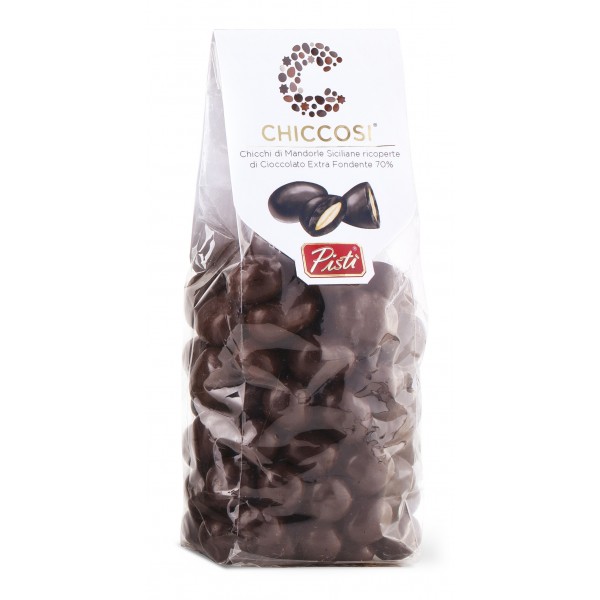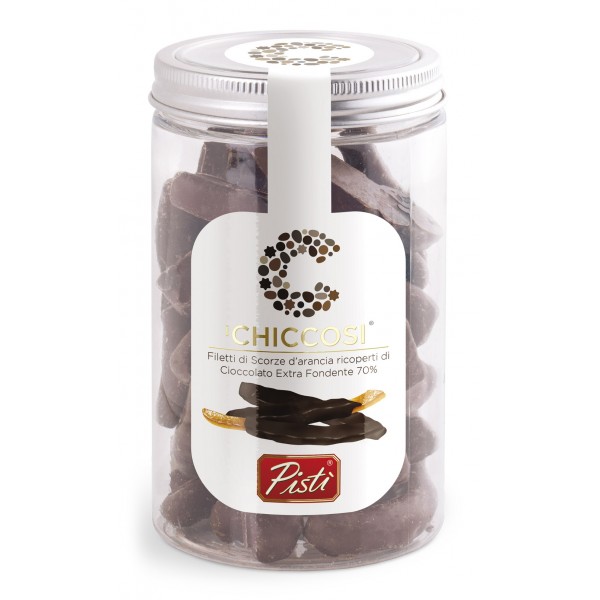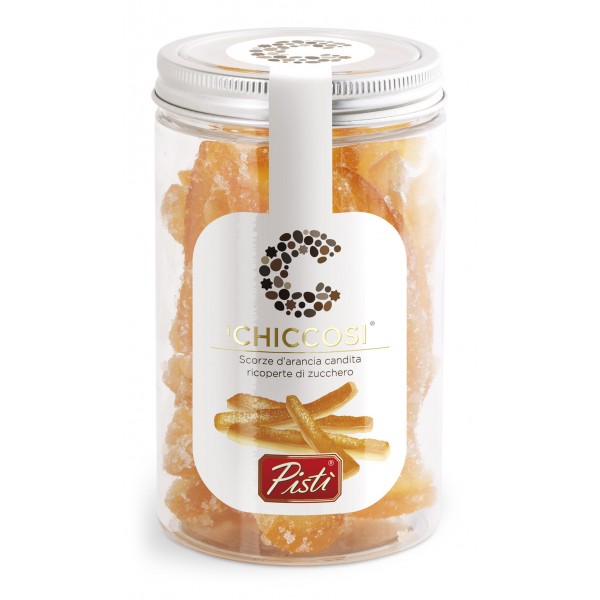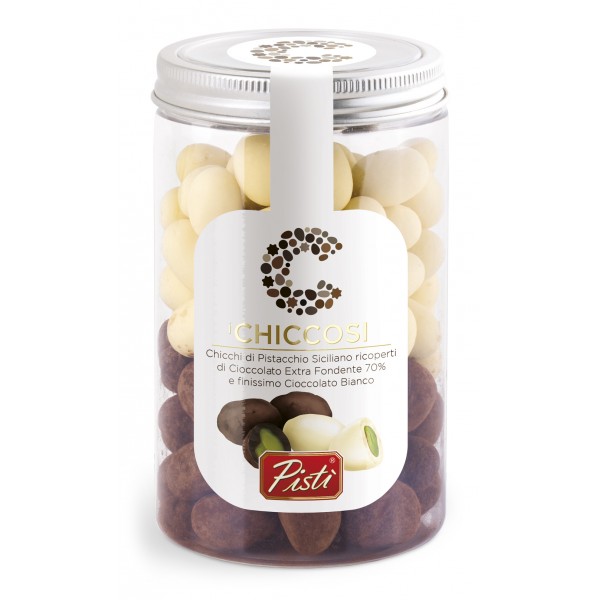No products
Categories
- Fashion Accessories
- Clothing
- Beauty & Lifestyle
-
Hi-Tech & Lifestyle
- Gaming
-
Case
- iPhone 11 Pro
- iPhone 11 Pro Max
- iPhone 11
- iPhone X / XS
- iPhone XS Max
- Samsung S10 / S10+ / S10e
- Huawei P30 / P30 Pro / P30 Lite
- Huawei P20 / P20 Pro / P20 Lite
- iPhone XR
- Samsung S9
- Samsung S9+
- iPhone 8 / 7
- iPhone 8 Plus / 7 Plus
- Samsung S8
- Samsung S8+
- Samsung S7
- Samsung S7 Edge
- iPhone 6 / 6 s
- iPhone 6 Plus / 6 s Plus
- iPhone 5 / SE
- Skin
- Audio
- Smart Home
- Drones & Hoverboard
- Photo & Video
- Desk Supplies
- Accessories
- Games
- Beverages
- Food
- Home
- Jewelry
- Luxury
- Travel
- Art
- Footwear
- Vintage Fashion
- Restaurants
- Sport
- Animals
- Gift Ideas
- Kidswear
Extra
Viewed Products
-

Stella McCartney - Translucent Rectangle Sunglasses - Translucent Brown...
The exclusive shape of Stella...
Pistì
From an Ancient Art, Come Contemporary Sweet Delicacies
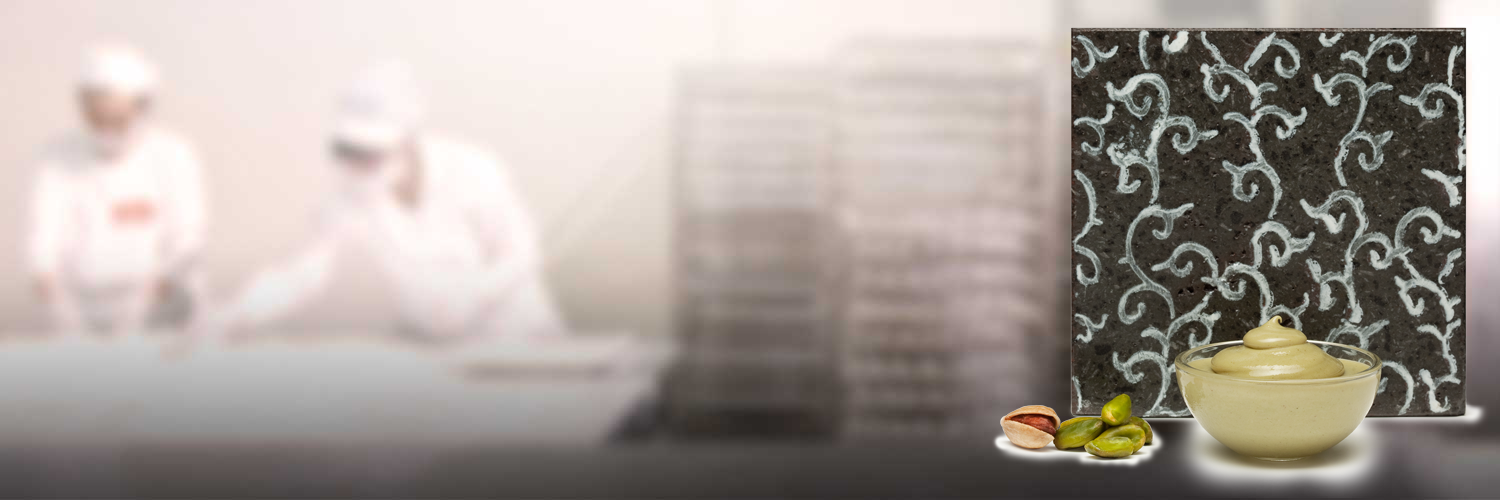
Pistachio Cream
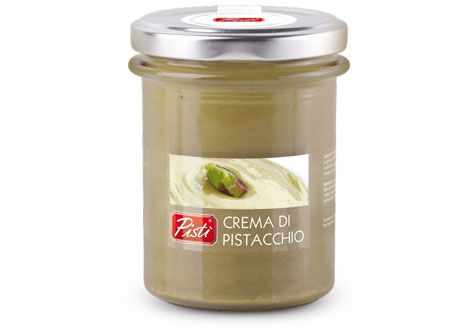
A new way and a new world, all to be spread. The sweet pistachio cream is a green alternative to the cocoa spreadable creams. Made only with the best pistachios. A delight to be enjoyed every time: a snack to recharge yourselves or as a simple dessert for a delicious after dinner. But also as a gregant ingredient to be used in the kitchen, specially to fill crepes and shortcrust pastry. A unique taste, good by itself: irresistible delicacy, a pleasure that melts in your mouth.
A Big Sicilian Pastry Workshop
And its secret: real first-hand knowledge of artisinal products which can only emphasise the authenticity of our products.
A Success Story, In The Sicilian Way

Tradition and flavors that have come from far away and that today have reached everywhere.
Pistì is born almost from a game, that of 2 young people who decided, just twenty years ago, to bet on a project that combines the Sicilian confectionary vocation with a modern way of doing business. The intuition that Nino Marino and Vincenzo Longhitano had then was to invent an artisan workshop for the production of typical Sicilian sweets: so nougat, martorana fruit, crunchy and chocolate, almond specialties, panettone and doves, but with a new mood of refinement and creativity that meet the palate and the desire for innovation of the younger generation.
Thanks to excellent raw materials and careful craftsmanship, Pisti was spot on: the debut at Cibus collected so many orders that a new warehouse was immediately purchased next to the historic pastry laboratory in the centre of Bronte. The rest is history: Pisti currently employs 45 permanent workers, that during high production periods can reach 130, with new hires each year.
The widespread use of the female workforce and a strong sensitivity to the environment complete the image of a well rounded company which is a grand laboratory of handmade pastry where all the processes - from the production to packaging, taking care in the choice of packaging and decor which are still done by hand . All this can only be the result of a beautiful mix of knowledge and flavour and in spite of the important figures reached, the company maintains its manual skill that made and makes Pisti a success story. Pisti is steeped in a strictly Sicilian tradition and modernity, in a mix of wisdom and excellence that will last over time.
Raw Materials, Before Everything

Our sweets are tradition, made with ingredients that tell the millennia of Sicilian confectionery history, in an ideal itinerary through the island: the green pistachio of Bronte PDO, the almond of Avola, the hazelnuts of the Nebrodi, processed and processed according to criteria that they preserve their integrity and translate them into inimitable exquisiteness. And then the candied fruit, outsider of the local heritage, which tradition wants to introduce in Sicily during the Arab domination in Palermo and then handed down over the centuries by the skilled hands of the best pastry chefs of the island.
Pistacchio - Sua Eccellenza, Il Pistacchio di Bronte

Pistacchi di Bronte raccolti a mano.
An Ancient Fruit for Tradition

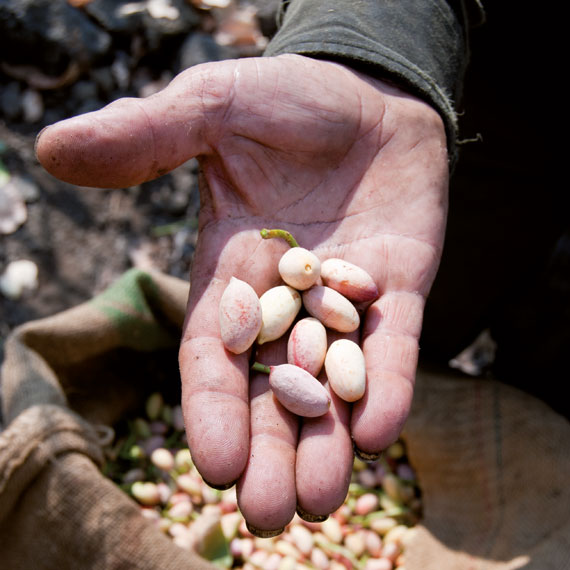
Pistachio di Bronte, a plant of Persian origins originating from the Mediterranean basin, the pistachio is mentioned even in the Old Testament and was already cultivated at the time of the Jews for its precious fruit. In Sicily it was the Arabs during their domination to develop the cultivation of this particular fruit plant, today the undisputed star of our pistachio almond paste, of crunchy and soft nougats, but also of sweet spreads and gastronomic pates, ideal for irresistible culinary inventions.
Green Gold of Etna
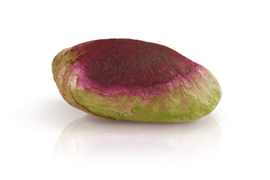
Long-lived and resistant, able to grow clinging to lava and steep soils, the green pistachio is, to good advantage, the symbol of the city of Bronte and its territory, the slopes of Etna, its habitat of excellence of which it represents the most source of wealth. If the pistachio is called "green gold", it is also for the emerald green color, for those organoleptic characteristics, derived from a microclimate unrepeatable elsewhere, which make it a fruit of high value, excellent in size and taste compared to pistachios coming from Greece, the Middle East, California or Argentina.
The Secret of an Unmistakable Taste

It is the harvest every 2 years that makes the Pistachio of Bronte Dop a unique fruit: only in this way the plant has time to absorb from the lava soil in which it grows, all those nutrients that release the fruit then its unmistakable aroma, perfume and a taste that has no equal. And that allows us to transform it into our sweet delicacies.
Almond - Almond There is One Sole, The Avola Almond

Avola almonds, harvested by hand.
It's Easy to Say Almond

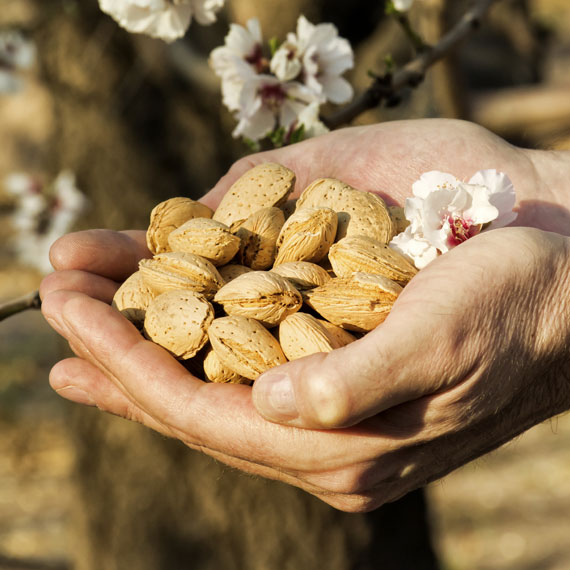
Avola almond of Avola Originally from the Mediterranean basin, in Sicily it landed with the Phoenicians and soon spread to all the Greek colonies. Used in the kitchen since ancient times, the best of all almonds remains the Pizzuta d'Avola, absolute queen of our delights: almond pastries, classic, pistachio or hazelnut or flavored with orange or chocolate, the delicious crunchy, but also nougat and nougat scented with orange blossom honey and white or dark chocolate glaze.
La Mennulla, Queen of Siracusano
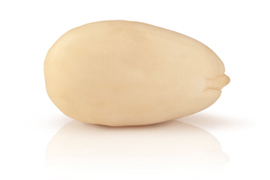
The almond of Avola has always been cultivated in the Syracuse area where the temperate climate of the Iblei mountains creates an ideal environment where to grow in harmony with the territory, making it a unique product, known all over the world. But what makes Avola's almond so special are its organoleptic qualities, which give it an unparalleled taste and exceptional nutritional properties, such as a polyphenol content, 3 times higher than that of the Californian almond.
La Pizzuta, or Rather The Favorite
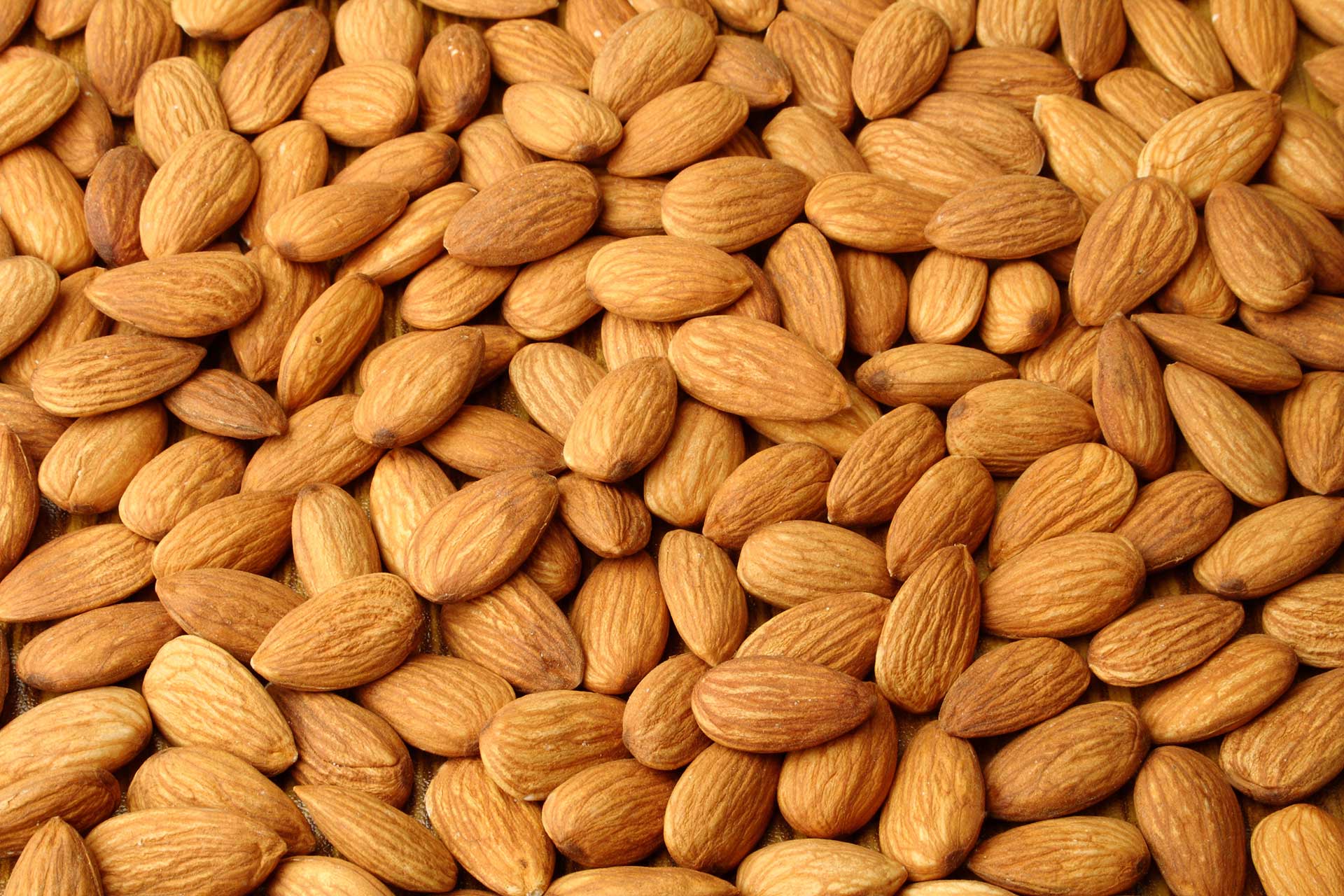
Among the three main cultivars of the almond d'Avola, Pizzuta, Fascionello and Romana, the superstar is undoubtedly the Pizzuta, so called for the typical perfectly elliptical shape but pointed at one end, with aromatic notes of taste rich and round yet so delicate, to be chosen the favorite of our pastry chefs for the preparation of Pistì delights.
Hazelnut - The "Nucidda", Queen of the Nebrodi

Hazelnuts from Nebrodi, harvested by hand.
Hazelnut, All-Around Delight


Shrub dating back to prehistoric times, the hazel spread in Europe after the last glaciation. Italy and in particular Sicily is today one of the main producers in the world thanks to the varieties grown on Nebrodi particularly appreciated for the balance between aroma, fragrance and consistency, which are found intact, in almond paste, in crisp and nougat or chiccosis, exquisite dried fruit covered with chocolate of different flavors, irresistible temptation for the palate.
A Land and a Treasure
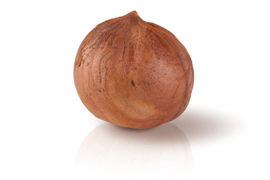
At least since the 1600s, hazelnut is a source of wealth for the Nebrodi territory, a pristine and protected habitat rich in biodiversity. The production cycle of the Nebrodi round hazelnut, from the tree to its use in the kitchen, has always been kept by local women who have protected its fruits, which are characterized by the other Italian and foreign varieties for the sweetest flavor, the intensity of the perfume and the organoleptic characteristics rich in selenium, potassium, omega 3 and 6 and also vitamin E.
The Hazelnut Triangle
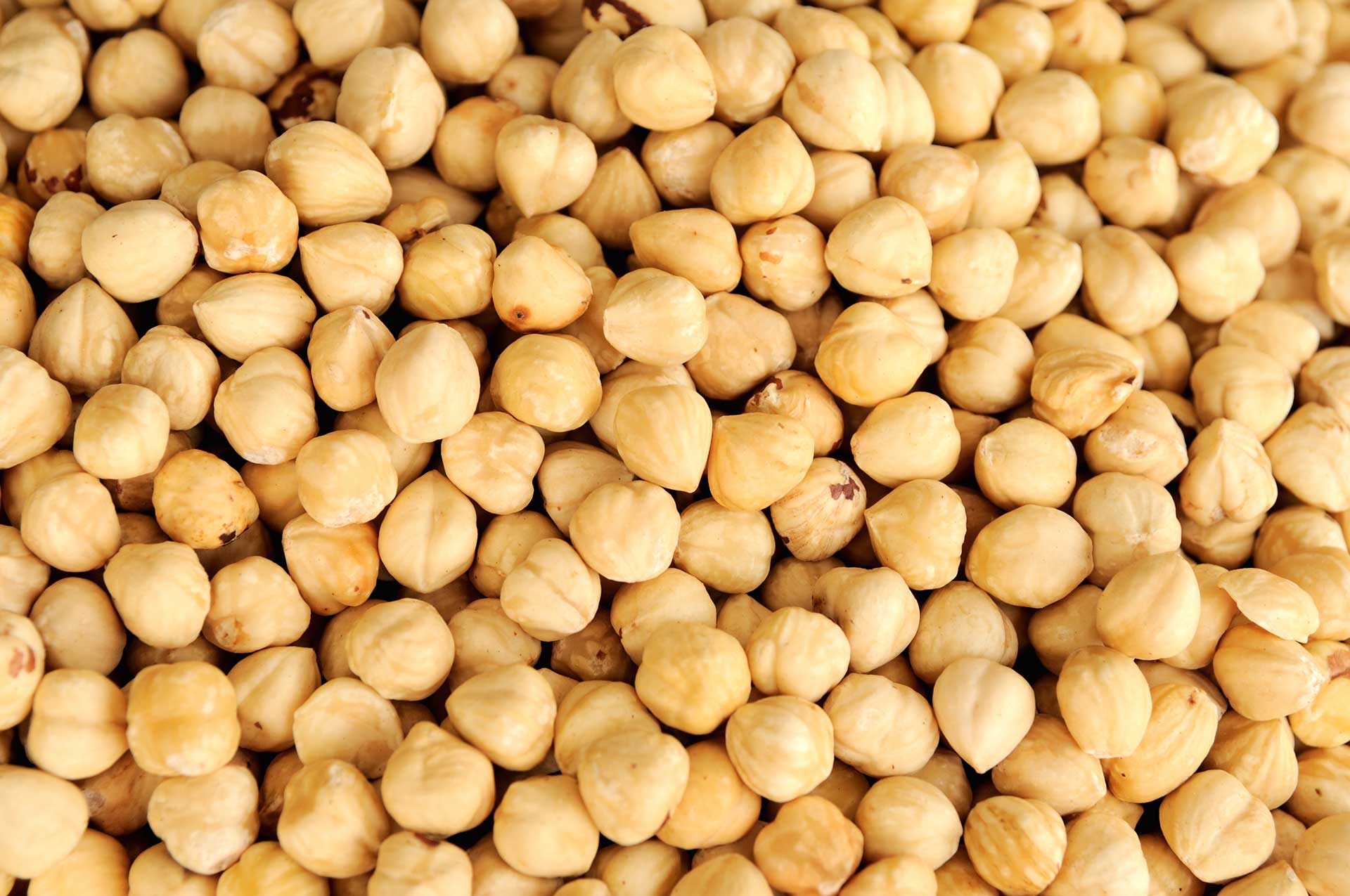
It is in the territory of the Nebrodi between Castel'Umberto, Tortorici and Ucria that is concentrated the production of high quality stones divided between the cultivars Curcia, Cart, Ghiaria and Minnulare: about 12,000 hectares that make Sicily the Italian region leader in production of this extraordinary fruit the harvest of which takes place as soon as the full maturity is reached, or between the months of September and October when the hazelnuts tend to detach and fall and the bracts that surround them dry up. To then be transformed into the sweet delicacies Pistì.
Candied Fruits - Sweets, Which Come From Far Away

Precious fruits, picked by hand.
Simply, Exquisite


Candied fruit Candied fruit has its ancient origin in practice, already widespread in Mesopotamia and in China, to use sugar to preserve fruit, roots and plants. It is up to the Arabs to have transformed this conservation system into a fruit treat immersed in an irresistible sugary solution for the palate. The candied fruit is today the main ingredient of some protagonists of our pastry art: the classic panettone with candied orange, the almond paste flavored with citrus, orange and mandarin on the head, but also the chiccis, candied orange filets natural or glazed with chocolate.
Ancient Sweet, For Modern Delights
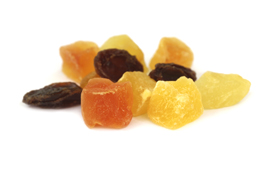
Ancient and laborious legacy of the Arab influence on the Sicilian confectionery tradition, the candying of the fruit consists since ancient times in the boiling of fruit mainly but also of flowers and roots, which maintain color, flavor and shape indispensable for the uses in confectionery to which they are intended. In fact, the tradition of candied fruit peaches in a past, not so far, in which there were no greenhouses or fruit out of season and nothing was thrown away, so that the extra fruit that was not consumed was subjected to candying so it was lengthened life and you had a simple delicacy to use gently when needed.
Candites, from A to Z
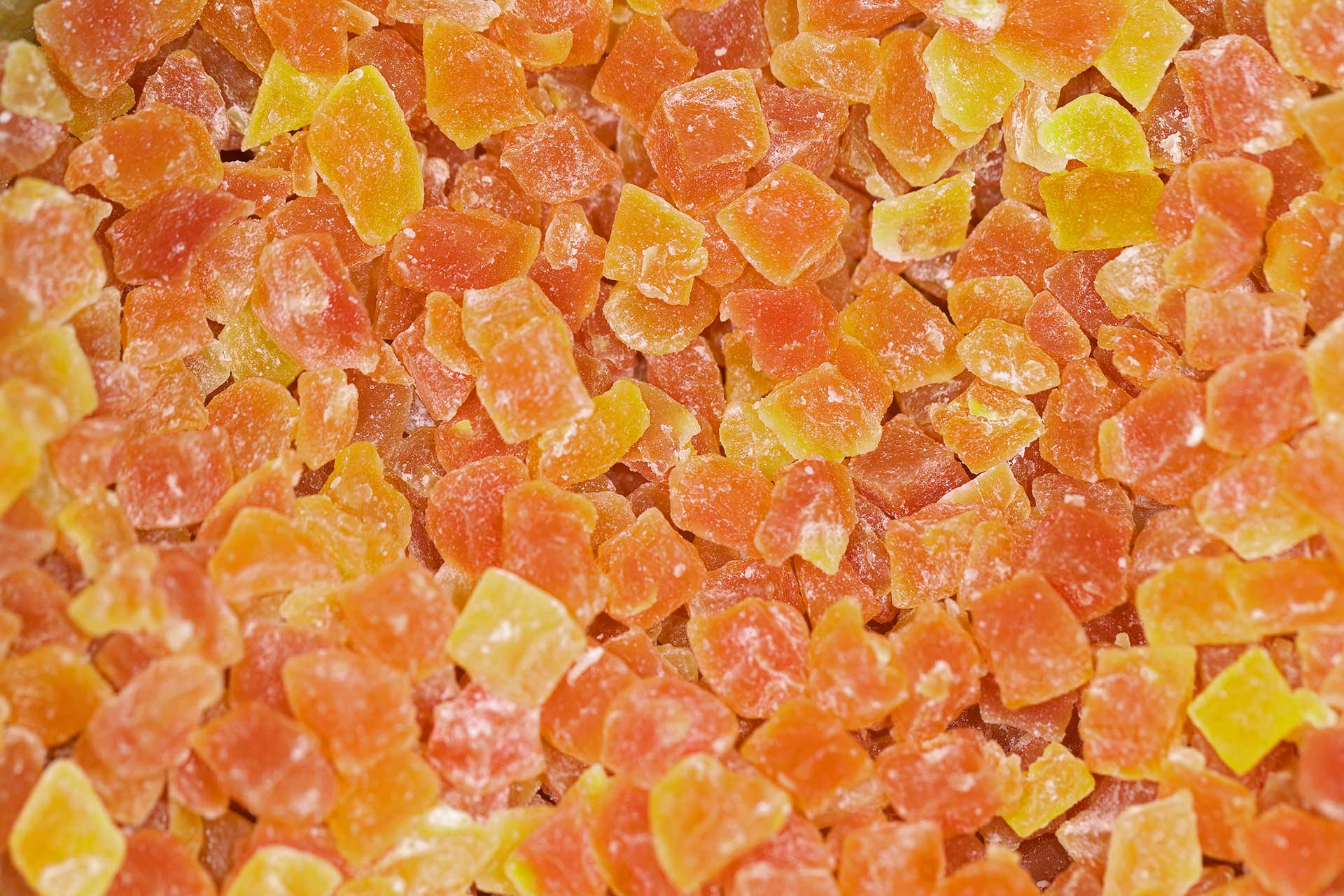
Oranges, cherries, tangerines, pears, zuccata; many varieties of fruit that lend themselves to various occasions of use, in a combination of tradition and modernity that inherits from the origins the selection of an exceptional raw material and combines it with a desire for innovation always tuned to consumer preferences: recovery of the ancient recipes, but also sensitivity and attention to new emerging tastes, with a passion for the product unchanged and timeless.
Our Secret? Craft Processing
.jpg)
Our desserts hide a certainty: being the result of careful and methodical work of the hands that made them. Not machines or mechanical arms, but hands in fact, that in that pastry, nougat, panettone, chiccoso that is, have put all the effort that only human activity can achieve. For this reason we can still define ourselves and always an artisanal workshop: for the imprinting of ingenuity and painstaking work, in which nothing is left to chance and that is perceived in every single step of our work.

Kneading is a vocation, and we have made it our own: whether it is flour for the fragrant panettone or the delicious Easter doves, of doughs for the traditional almond and sugar pastry, or of nougat and crunchy amalgam of orange blossom honey and fragrant dried fruit. However, kneading is the thing we express to the best, we like it and it comes very well because our master pastry chefs know this art as nobody and replicate it in masterpieces of throat that we never finish to perfect, in a search for quality and of the new that accompanies us throughout our work.
Leavening

Imagine a mixture of ingredients and exceptional raw materials that is put to leaven. One day passes and this rises again, releasing all the aromas and aromas of the most selected ingredients into the heat. So, rested up to 36 hours and more, this dough becomes what arrives on our tables: a masterpiece of sweetness that never ceases to enchant the taste buds of those who taste it: an emotion of the senses that begins with the eyes, just to see it and even before discarding it, and continues with the mouth and the taste of savoring something that passes recipes unchanged over time, in an endless sweetness.
Cooking
.jpg)
After leavening, our doughs, already fragrant with aromas and flavors, pass in the oven for a careful cooking that represents the crucial passage of a process that makes slowness its main inspirational reason. Only in this way, in fact, the panettone, the doves, the shortcrust pastry cakes, reach the sublime perfection in the oven, beyond which all that remains is tasting. It is no coincidence that Pistì also signs masterpieces of baking art.

Crank

A goodness that we see ours, not surprisingly every Pistì delight, whether it is the fragrant panettone or the delicious doves, but also the delicious sweets of pastry and almond, or the chiccosi, is the result of a maniacal attention to detail, where the good of the tasting is accompanied by the beauty of the decoration and it is here that all the craftsmanship that accompanies our sweetness comes out: there is no grain or grain of dried fruit, piece of candied or icing covering, that is not affixed from the expert hands of our pastry chefs and dosed carefully, for a final result that speaks for itself, where sweetness is served, in beauty.
Packing

The details are important, and that's why we dedicate to the packaging in which the Pistì delights are enclosed, a great attention. Only in this way can we guarantee and preserve all the fragrance they contain just made.

With the choice of quality casings, selected mainly for their functionality, but also because we want every box, blister, ribbon or bow, to live up to the goodness that it holds inside.

It's Our Land, That Makes Us Better

Bronte pistachios picked by hand.
Goodness Beneath The Volcano
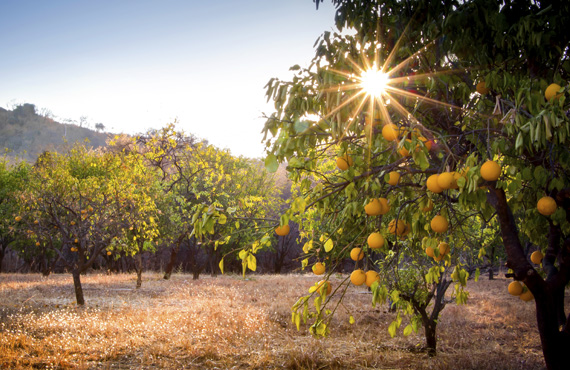
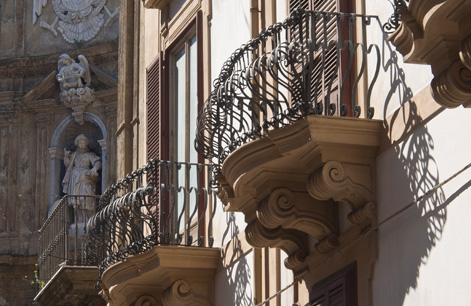
Etna generates around it only good fruits. It made the entire confectionery tradition of the island its own in the renewed creation of masterpieces, marked by sweetness.
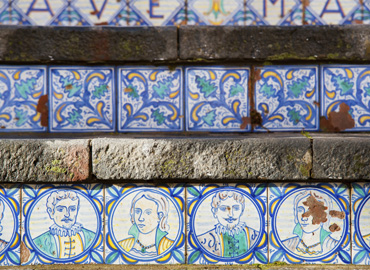

In The Name of The Land

Our desserts tell their story and together that of our land. Almond paste, more Sicilian than elsewhere because it is up to us that the Arabs have left it. The chocolate, of excellence like the Swiss because the Spaniards, in their turn used by the Aztecs, brought it to Sicily in the 16th century. And then the nougat and the crunchy even these in our tradition because variation on the theme of the ancient Arabic cubaida of sesame and honey. Traditional sweets, which we pass on by experimenting with them in ever new agreements, in a search for gluttony that never ends. From the earth, but always with sweetness.
Sweets for All Tastes
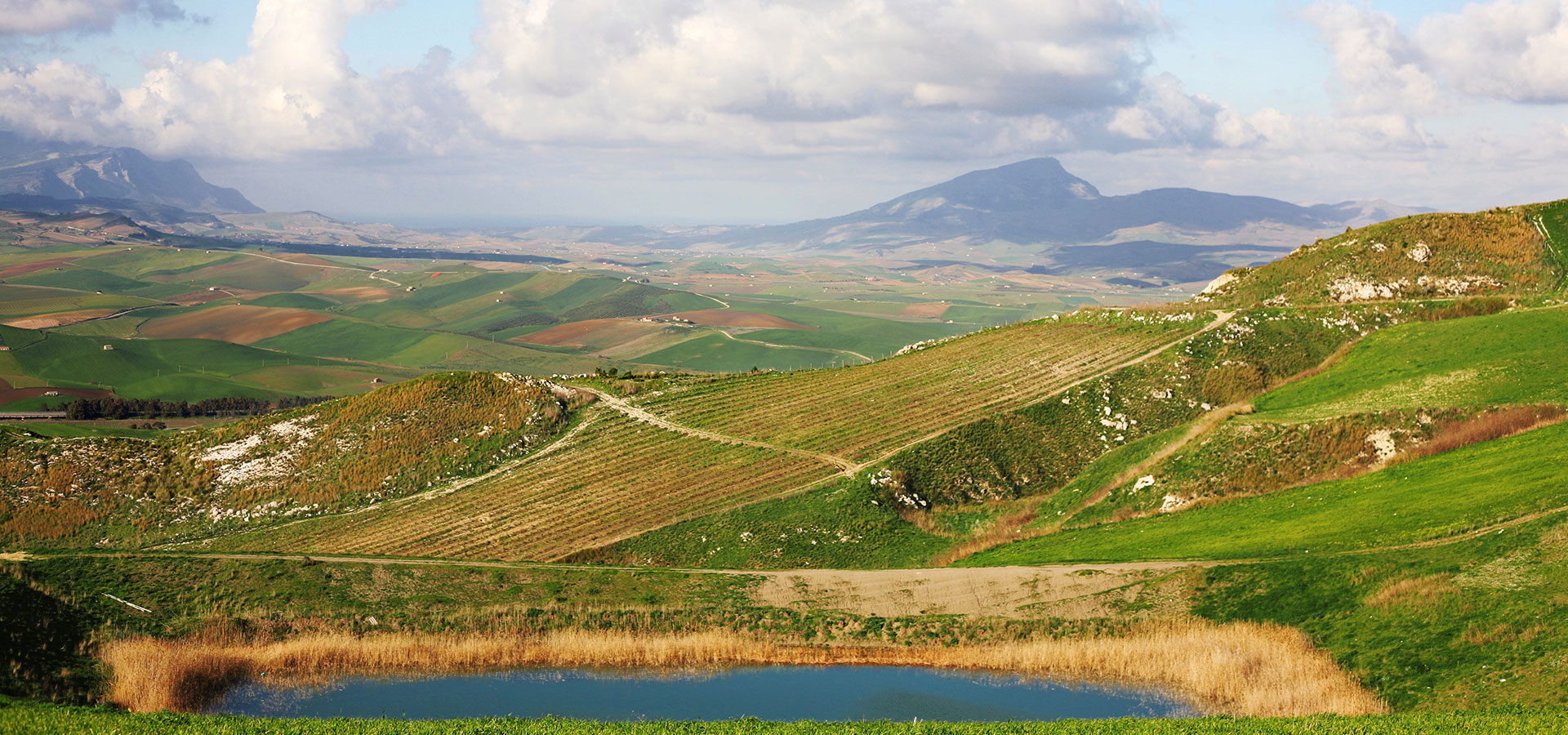
A continuous reference between soft and crunchy, sweet to less sweet, chocolaty and not, aromatic and fruity, on a journey to 360 ° in the sweetest Sicily.
Products Pistì
Pistì
From an Ancient Art, Come Contemporary Sweet Delicacies

Pistachio Cream

A new way and a new world, all to be spread. The sweet pistachio cream is a green alternative to the cocoa spreadable creams. Made only with the best pistachios. A delight to be enjoyed every time: a snack to recharge yourselves or as a simple dessert for a delicious after dinner. But also as a gregant ingredient to be used in the kitchen, specially to fill crepes and shortcrust pastry. A unique taste, good by itself: irresistible delicacy, a pleasure that melts in your mouth.
A Big Sicilian Pastry Workshop
And its secret: real first-hand knowledge of artisinal products which can only emphasise the authenticity of our products.
A Success Story, In The Sicilian Way

Tradition and flavors that have come from far away and that today have reached everywhere.
Pistì is born almost from a game, that of 2 young people who decided, just twenty years ago, to bet on a project that combines the Sicilian confectionary vocation with a modern way of doing business. The intuition that Nino Marino and Vincenzo Longhitano had then was to invent an artisan workshop for the production of typical Sicilian sweets: so nougat, martorana fruit, crunchy and chocolate, almond specialties, panettone and doves, but with a new mood of refinement and creativity that meet the palate and the desire for innovation of the younger generation.
Thanks to excellent raw materials and careful craftsmanship, Pisti was spot on: the debut at Cibus collected so many orders that a new warehouse was immediately purchased next to the historic pastry laboratory in the centre of Bronte. The rest is history: Pisti currently employs 45 permanent workers, that during high production periods can reach 130, with new hires each year.
The widespread use of the female workforce and a strong sensitivity to the environment complete the image of a well rounded company which is a grand laboratory of handmade pastry where all the processes - from the production to packaging, taking care in the choice of packaging and decor which are still done by hand . All this can only be the result of a beautiful mix of knowledge and flavour and in spite of the important figures reached, the company maintains its manual skill that made and makes Pisti a success story. Pisti is steeped in a strictly Sicilian tradition and modernity, in a mix of wisdom and excellence that will last over time.
Raw Materials, Before Everything

Our sweets are tradition, made with ingredients that tell the millennia of Sicilian confectionery history, in an ideal itinerary through the island: the green pistachio of Bronte PDO, the almond of Avola, the hazelnuts of the Nebrodi, processed and processed according to criteria that they preserve their integrity and translate them into inimitable exquisiteness. And then the candied fruit, outsider of the local heritage, which tradition wants to introduce in Sicily during the Arab domination in Palermo and then handed down over the centuries by the skilled hands of the best pastry chefs of the island.
Pistacchio - Sua Eccellenza, Il Pistacchio di Bronte

Pistacchi di Bronte raccolti a mano.
An Ancient Fruit for Tradition


Pistachio di Bronte, a plant of Persian origins originating from the Mediterranean basin, the pistachio is mentioned even in the Old Testament and was already cultivated at the time of the Jews for its precious fruit. In Sicily it was the Arabs during their domination to develop the cultivation of this particular fruit plant, today the undisputed star of our pistachio almond paste, of crunchy and soft nougats, but also of sweet spreads and gastronomic pates, ideal for irresistible culinary inventions.
Green Gold of Etna

Long-lived and resistant, able to grow clinging to lava and steep soils, the green pistachio is, to good advantage, the symbol of the city of Bronte and its territory, the slopes of Etna, its habitat of excellence of which it represents the most source of wealth. If the pistachio is called "green gold", it is also for the emerald green color, for those organoleptic characteristics, derived from a microclimate unrepeatable elsewhere, which make it a fruit of high value, excellent in size and taste compared to pistachios coming from Greece, the Middle East, California or Argentina.
The Secret of an Unmistakable Taste

It is the harvest every 2 years that makes the Pistachio of Bronte Dop a unique fruit: only in this way the plant has time to absorb from the lava soil in which it grows, all those nutrients that release the fruit then its unmistakable aroma, perfume and a taste that has no equal. And that allows us to transform it into our sweet delicacies.
Almond - Almond There is One Sole, The Avola Almond

Avola almonds, harvested by hand.
It's Easy to Say Almond


Avola almond of Avola Originally from the Mediterranean basin, in Sicily it landed with the Phoenicians and soon spread to all the Greek colonies. Used in the kitchen since ancient times, the best of all almonds remains the Pizzuta d'Avola, absolute queen of our delights: almond pastries, classic, pistachio or hazelnut or flavored with orange or chocolate, the delicious crunchy, but also nougat and nougat scented with orange blossom honey and white or dark chocolate glaze.
La Mennulla, Queen of Siracusano

The almond of Avola has always been cultivated in the Syracuse area where the temperate climate of the Iblei mountains creates an ideal environment where to grow in harmony with the territory, making it a unique product, known all over the world. But what makes Avola's almond so special are its organoleptic qualities, which give it an unparalleled taste and exceptional nutritional properties, such as a polyphenol content, 3 times higher than that of the Californian almond.
La Pizzuta, or Rather The Favorite

Among the three main cultivars of the almond d'Avola, Pizzuta, Fascionello and Romana, the superstar is undoubtedly the Pizzuta, so called for the typical perfectly elliptical shape but pointed at one end, with aromatic notes of taste rich and round yet so delicate, to be chosen the favorite of our pastry chefs for the preparation of Pistì delights.
Hazelnut - The "Nucidda", Queen of the Nebrodi

Hazelnuts from Nebrodi, harvested by hand.
Hazelnut, All-Around Delight


Shrub dating back to prehistoric times, the hazel spread in Europe after the last glaciation. Italy and in particular Sicily is today one of the main producers in the world thanks to the varieties grown on Nebrodi particularly appreciated for the balance between aroma, fragrance and consistency, which are found intact, in almond paste, in crisp and nougat or chiccosis, exquisite dried fruit covered with chocolate of different flavors, irresistible temptation for the palate.
A Land and a Treasure

At least since the 1600s, hazelnut is a source of wealth for the Nebrodi territory, a pristine and protected habitat rich in biodiversity. The production cycle of the Nebrodi round hazelnut, from the tree to its use in the kitchen, has always been kept by local women who have protected its fruits, which are characterized by the other Italian and foreign varieties for the sweetest flavor, the intensity of the perfume and the organoleptic characteristics rich in selenium, potassium, omega 3 and 6 and also vitamin E.
The Hazelnut Triangle

It is in the territory of the Nebrodi between Castel'Umberto, Tortorici and Ucria that is concentrated the production of high quality stones divided between the cultivars Curcia, Cart, Ghiaria and Minnulare: about 12,000 hectares that make Sicily the Italian region leader in production of this extraordinary fruit the harvest of which takes place as soon as the full maturity is reached, or between the months of September and October when the hazelnuts tend to detach and fall and the bracts that surround them dry up. To then be transformed into the sweet delicacies Pistì.
Candied Fruits - Sweets, Which Come From Far Away

Precious fruits, picked by hand.
Simply, Exquisite


Candied fruit Candied fruit has its ancient origin in practice, already widespread in Mesopotamia and in China, to use sugar to preserve fruit, roots and plants. It is up to the Arabs to have transformed this conservation system into a fruit treat immersed in an irresistible sugary solution for the palate. The candied fruit is today the main ingredient of some protagonists of our pastry art: the classic panettone with candied orange, the almond paste flavored with citrus, orange and mandarin on the head, but also the chiccis, candied orange filets natural or glazed with chocolate.
Ancient Sweet, For Modern Delights

Ancient and laborious legacy of the Arab influence on the Sicilian confectionery tradition, the candying of the fruit consists since ancient times in the boiling of fruit mainly but also of flowers and roots, which maintain color, flavor and shape indispensable for the uses in confectionery to which they are intended. In fact, the tradition of candied fruit peaches in a past, not so far, in which there were no greenhouses or fruit out of season and nothing was thrown away, so that the extra fruit that was not consumed was subjected to candying so it was lengthened life and you had a simple delicacy to use gently when needed.
Candites, from A to Z

Oranges, cherries, tangerines, pears, zuccata; many varieties of fruit that lend themselves to various occasions of use, in a combination of tradition and modernity that inherits from the origins the selection of an exceptional raw material and combines it with a desire for innovation always tuned to consumer preferences: recovery of the ancient recipes, but also sensitivity and attention to new emerging tastes, with a passion for the product unchanged and timeless.
Our Secret? Craft Processing
.jpg)
Our desserts hide a certainty: being the result of careful and methodical work of the hands that made them. Not machines or mechanical arms, but hands in fact, that in that pastry, nougat, panettone, chiccoso that is, have put all the effort that only human activity can achieve. For this reason we can still define ourselves and always an artisanal workshop: for the imprinting of ingenuity and painstaking work, in which nothing is left to chance and that is perceived in every single step of our work.

Kneading is a vocation, and we have made it our own: whether it is flour for the fragrant panettone or the delicious Easter doves, of doughs for the traditional almond and sugar pastry, or of nougat and crunchy amalgam of orange blossom honey and fragrant dried fruit. However, kneading is the thing we express to the best, we like it and it comes very well because our master pastry chefs know this art as nobody and replicate it in masterpieces of throat that we never finish to perfect, in a search for quality and of the new that accompanies us throughout our work.
Leavening

Imagine a mixture of ingredients and exceptional raw materials that is put to leaven. One day passes and this rises again, releasing all the aromas and aromas of the most selected ingredients into the heat. So, rested up to 36 hours and more, this dough becomes what arrives on our tables: a masterpiece of sweetness that never ceases to enchant the taste buds of those who taste it: an emotion of the senses that begins with the eyes, just to see it and even before discarding it, and continues with the mouth and the taste of savoring something that passes recipes unchanged over time, in an endless sweetness.
Cooking
.jpg)
After leavening, our doughs, already fragrant with aromas and flavors, pass in the oven for a careful cooking that represents the crucial passage of a process that makes slowness its main inspirational reason. Only in this way, in fact, the panettone, the doves, the shortcrust pastry cakes, reach the sublime perfection in the oven, beyond which all that remains is tasting. It is no coincidence that Pistì also signs masterpieces of baking art.

Crank

A goodness that we see ours, not surprisingly every Pistì delight, whether it is the fragrant panettone or the delicious doves, but also the delicious sweets of pastry and almond, or the chiccosi, is the result of a maniacal attention to detail, where the good of the tasting is accompanied by the beauty of the decoration and it is here that all the craftsmanship that accompanies our sweetness comes out: there is no grain or grain of dried fruit, piece of candied or icing covering, that is not affixed from the expert hands of our pastry chefs and dosed carefully, for a final result that speaks for itself, where sweetness is served, in beauty.
Packing

The details are important, and that's why we dedicate to the packaging in which the Pistì delights are enclosed, a great attention. Only in this way can we guarantee and preserve all the fragrance they contain just made.

With the choice of quality casings, selected mainly for their functionality, but also because we want every box, blister, ribbon or bow, to live up to the goodness that it holds inside.

It's Our Land, That Makes Us Better

Bronte pistachios picked by hand.
Goodness Beneath The Volcano


Etna generates around it only good fruits. It made the entire confectionery tradition of the island its own in the renewed creation of masterpieces, marked by sweetness.


In The Name of The Land

Our desserts tell their story and together that of our land. Almond paste, more Sicilian than elsewhere because it is up to us that the Arabs have left it. The chocolate, of excellence like the Swiss because the Spaniards, in their turn used by the Aztecs, brought it to Sicily in the 16th century. And then the nougat and the crunchy even these in our tradition because variation on the theme of the ancient Arabic cubaida of sesame and honey. Traditional sweets, which we pass on by experimenting with them in ever new agreements, in a search for gluttony that never ends. From the earth, but always with sweetness.
Sweets for All Tastes

A continuous reference between soft and crunchy, sweet to less sweet, chocolaty and not, aromatic and fruity, on a journey to 360 ° in the sweetest Sicily.
Products Pistì
-
Pistì - Soft Nougat Slice with Sicilian Pistachio - Fine Pastry in Flow Pack
Soft slices of very soft nougat with almonds, hazelnuts and Sicilian pistachio. A small temptation full of delicacy for an unusual way to enjoy our exclusive nougat.
4,50 € -
Pistì - Soft Nougat Slice with Sicilian Hazelnut - Fine Pastry in Flow Pack
Soft slices of very soft nougat with almonds, hazelnuts and Sicilian pistachio. A small temptation full of delicacy for an unusual way to enjoy our exclusive nougat.
3,80 € -
Pistì - Soft Nougat Slice with Sicilian Modican Chocolate - Fine Pastry in...
Soft slices of very soft nougat with almonds, hazelnuts and Sicilian pistachio. A small temptation full of delicacy for an unusual way to enjoy our exclusive nougat.
3,80 € -
Pistì - Soft Nougat Assorted Zagara Flower - Fine Pastry in Flow Pack
Soft nougat with almonds covered in dark chocolate, milk, white chocolate, chocolate flavored with coffee and lemon. Tradition and quality of ingredients for small masterpieces of delicious sweetness.
5,50 € -
Pistì - Soft Nougat Assorted Zagara Flower - Fine Pastry in Flow Pack
Soft nougat with almonds covered in dark chocolate, milk, white chocolate, chocolate flavored with coffee and lemon. Tradition and quality of ingredients for small masterpieces of delicious sweetness.
3,10 € -
Pistì - Soft Nougat Assorted Zagara Flower - Fine Pastry in Envelope with Bow
Soft nougat with almonds covered in dark chocolate, milk, white chocolate, chocolate flavored with coffee and lemon. Tradition and quality of ingredients for small masterpieces of delicious sweetness.
6,10 € -
Pistì - Soft Nougat Assorted Zagara Flower - Fine Pastry in Pillow Envelope
Envelopes of Sicilian almond nougat assorted in five layers of very fine chocolate.
11,30 € -
Pistì - Soft Nougat Assorted Zagara Flower - Fine Pastry in Pillow Envelope
Envelopes of Sicilian almond nougat assorted in five layers of very fine chocolate.
22,10 € -
Pistì - Soft Nougat Assorted Zagara Flower - Fine Pastry in Gift Box Blanca
Soft nougats covered with chocolate and encased in the precious "Blanca" gift box. When class and taste meet.
12,30 € -
Pistì - Quadrotto Chocolate - Dark Chocolate with Whole Almonds - Fine Pastry...
Tablets of chocolate and Sicilian dried fruit. Fine white chocolate and Sicilian pistachios, pure milk chocolate and whole Sicilian hazelnuts, 70% extra dark chocolate and toasted Sicilian almonds. When sweetness marries elegance.
3,99 € -
Pistì - Quadrotto Chocolate - Milk Chocolate with Whole Hazelnuts - Fine...
Tablets of chocolate and Sicilian dried fruit. Fine white chocolate and Sicilian pistachios, pure milk chocolate and whole Sicilian hazelnuts, 70% extra dark chocolate and toasted Sicilian almonds. When sweetness marries elegance.
3,99 € -
Pistì - Quadrotto Chocolate - White Chocolate with Whole Pistachios - Fine...
Tablets of chocolate and Sicilian dried fruit. Fine white chocolate and Sicilian pistachios, pure milk chocolate and whole Sicilian hazelnuts, 70% extra dark chocolate and toasted Sicilian almonds. When sweetness marries elegance.
4,35 € -
Pistì - Chiccosi - Pistachio Beans Covered with Extra Dark Chocolate - Fine...
When chocolate blends with the best Sicilian dried fruit, Chiccosi are born. Prelibate leccornìe with a unique taste. Small masterpieces of sweetness in elegant transparent bags to maintain freshness, fragrance and visibility.
6,50 € -
Pistì - Chiccosi - Pistachio Beans Covered with White Chocolate - Fine Pastry...
When chocolate blends with the best Sicilian dried fruit, Chiccosi are born. Prelibate leccornìe with a unique taste. Small masterpieces of sweetness in elegant transparent bags to maintain freshness, fragrance and visibility.
6,50 € -
Pistì - Chiccosi - Hazelnuts Covered with Milk Chocolate - Fine Pastry Hand...
When chocolate blends with the best Sicilian dried fruit, Chiccosi are born. Prelibate leccornìe with a unique taste. Small masterpieces of sweetness in elegant transparent bags to maintain freshness, fragrance and visibility.
6,50 € -
Pistì - Chiccosi - Dried Figs Covered with White Chocolate - Fine Pastry Hand...
When chocolate blends with the best Sicilian dried fruit, Chiccosi are born. Prelibate leccornìe with a unique taste. Small masterpieces of sweetness in elegant transparent bags to maintain freshness, fragrance and visibility.
6,50 € -
Pistì - Chiccosi - Dried Figs Covered with Extra Dark Chocolate - Fine Pastry...
When chocolate blends with the best Sicilian dried fruit, Chiccosi are born. Prelibate leccornìe with a unique taste. Small masterpieces of sweetness in elegant transparent bags to maintain freshness, fragrance and visibility.
6,50 € -
Pistì - Chiccosi - Almonds Covered with Extra Dark Chocolate - Fine Pastry...
When chocolate blends with the best Sicilian dried fruit, Chiccosi are born. Prelibate leccornìe with a unique taste. Small masterpieces of sweetness in elegant transparent bags to maintain freshness, fragrance and visibility.
6,50 € -
Pistì - Chiccosi - Candied Orange Peel and Dark Chocolate Coating - Fine...
Scented fresh candied orange peel covered with 70% extra dark chocolate and covered with granulated sugar. Authentic delicacies packed in elegant transparent jars with a metal screw lid.
7,50 € -
Pistì - Chiccosi - Candied Orange Peel and Grain of Sugar Coating - Fine...
Scented fresh candied orange peel covered with 70% extra dark chocolate and covered with granulated sugar. Authentic delicacies packed in elegant transparent jars with a metal screw lid.
7,50 € -
Pistì - Chiccosi Mix - Sicilian Pistachio Beans Covered with Chocolate - Fine...
All the pleasure of tasting our small buds of dried fruit in a mix of coatings made of the best 70% extra dark chocolate and fine white chocolate in a practical pet-tight jar.
7,50 €



